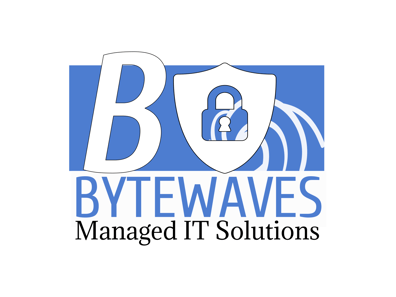Managed Detection and Response
Managed Detection and Response (MDR) is crucial for detecting and responding to cyber threats in real-time, safeguarding your business from breaches, ransomware, and other security risks. With our 24/7 monitoring and expert support, we ensure proactive threat detection and swift response to minimize disruptions. As a Managed Security Service Provider (MSSP), we provide the advantages of cutting-edge detection tools and skilled security professionals without the need for an in-house team, helping you save costs while strengthening your security. Our tailored MDR solutions are scalable, ensuring continuous protection and compliance. By outsourcing MDR to us, you can focus on your core business while we manage your cybersecurity needs.


24/7 Threat Monitoring
Continuous Network Surveillance: Constant monitoring of network traffic to detect unusual or unauthorized activity.
Real-Time Threat Detection: Identifying potential threats and vulnerabilities as they emerge.
Intrusion Detection Systems (IDS): Monitoring for signs of intrusion or unauthorized access attempts.
Log Collection and Analysis: Collecting logs from various systems and analyzing them for signs of suspicious activity.
Anomaly Detection: Identifying deviations from normal behavior to spot potential threats.
Alert Generation: Providing immediate notifications for any suspicious or malicious activity detected.
Threat Correlation: Analyzing data across different sources to correlate events and identify potential security incidents.


Security Information and Event Management (SIEM)
Centralized Log Management: Collecting and storing logs from various sources to enable comprehensive monitoring and analysis.
Real-Time Threat Detection: Identifying and alerting on suspicious activity across your network, applications, and endpoints.
Incident Correlation: Analyzing and correlating events from multiple systems to detect complex security threats.
Custom Dashboards: Providing visualizations and dashboards tailored to your organization’s security priorities.
Anomaly Detection: Identifying deviations from normal patterns to uncover potential insider threats or advanced attacks.
Threat Intelligence Integration: Enriching alerts with global threat intelligence to improve detection accuracy.
Automated Response: Enabling automated actions, such as isolating affected systems, to reduce response time during incidents.
Cloud and Hybrid Support: Monitoring security across on-premises, cloud, and hybrid environments..


Incident Response
Incident Identification: Detecting and confirming the occurrence of a security incident or breach.
Containment and Mitigation: Taking immediate steps to contain the incident and minimize its impact on the network and systems.
Root Cause Analysis: Investigating the source and cause of the incident to prevent future occurrences.
Eradication: Removing malicious elements, such as malware or unauthorized access, from affected systems.
Recovery: Restoring affected systems and services to normal operation while ensuring no further compromise.
Post-Incident Reporting: Documenting the incident, response actions, and lessons learned for compliance and future improvement.
Ongoing Monitoring: Continuously monitoring the environment to ensure that the incident is fully resolved and no further threats remain.


Threat Detection and Analysis
Continuous Threat Monitoring: Constant surveillance of network traffic, endpoints, and systems to identify emerging threats.
Threat Identification: Detecting potential threats, including malware, phishing attempts, and unauthorized access.
Risk Assessment: Evaluating the severity and potential impact of detected threats on the organization.
Threat Intelligence Integration: Utilizing global threat intelligence to improve detection and response capabilities.
Behavioral Analysis: Analyzing system and user behavior to spot suspicious or abnormal activity.
Root Cause Analysis: Investigating detected threats to determine their origin and nature.
Alert and Reporting: Generating alerts and detailed reports to inform stakeholders about detected threats and analysis findings.


User Behavior Analytics (UBA)
Behavioral Baseline Creation: Establishing normal user behavior patterns to detect anomalies and potential threats.
Anomaly Detection: Identifying deviations from typical user behavior that could indicate insider threats or compromised accounts.
Risk Scoring: Assigning risk scores to user activities based on detected anomalies, helping to prioritize responses.
Real-Time Monitoring: Continuously monitoring user actions across the network to identify suspicious activity as it occurs.
Alert Generation: Issuing alerts when abnormal behavior is detected, enabling rapid investigation and response.
Threat Correlation: Analyzing user behavior data in conjunction with other security data to uncover hidden threats.
Reporting and Forensics: Providing detailed reports and analysis of user behavior to support investigations and audits.


Vulnerability Management
Regular Scanning: Continuously scanning your network, systems, and applications to identify vulnerabilities.
Risk Assessment: Evaluating the severity of identified vulnerabilities to prioritize remediation efforts.
Patch Management: Applying security patches and updates to vulnerable systems to mitigate risks.
Remediation Planning: Developing and implementing action plans to address critical vulnerabilities effectively.
Compliance Reporting: Generating reports to ensure that vulnerability management efforts align with industry standards and regulations.
Threat Intelligence Integration: Using threat intelligence feeds to stay informed about the latest vulnerabilities and attack vectors.
Continuous Monitoring: Ongoing monitoring to detect newly discovered vulnerabilities and prevent potential exploits.


